The controversial photographs that skewer British peculiarities
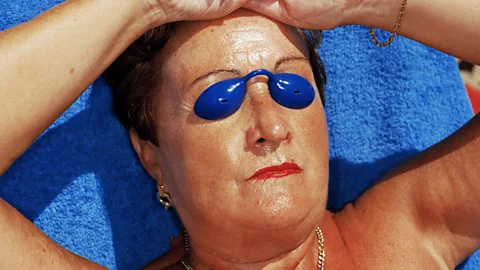 Martin Parr
Martin ParrAre Martin Parr's images snobbish – or do they just show British people as they really are, documenting "our national ludicrousness at all levels"?
In 2019, the year before Brexit, a photography exhibition opened at London's National Portrait Gallery examining national identity and notions of Britishness: Only Human by Martin Parr. Described by Parr as "a moment of self-reflection", the show featured a panoply of the photographer's colour-saturated photographs: a St George's parade, a patriotic tattoo and a family portrait that spoke to British eccentricity and featured the British artist and social commentator Sir Grayson Perry, who wrote the introduction to the accompanying catalogue.
Only Human appeared more than 30 years after the stir caused by Parr's Last Resort – a satirical look at holiday-makers in the decaying British seaside resort of New Brighton in the 1980s. Some found it sneering, but it triggered a variety of responses, proving that Parr's work has always been both striking and polarising.
 Martin Parr
Martin ParrGrowing giant leeks, a sunbather on a rundown pier, holidaymakers tucking into fast food − the British are depicted by Parr as peculiar creatures. Images of sandals with socks are a particular favourite. It’s a motif that seems to epitomise his practice: gently mocking some elements of British culture, while at the same time celebrating British quirkiness and pragmatism.
Though his pictures divide opinion, Martin Parr's insightful and humorous representations of the British at home and abroad have made him one of the country's most successful photographers – a former president of Magnum with more than 100 photo books to his name. This popularity continues today. Offering a pit-stop journey through his career, the exhibition Martin Parr: Short & Sweet is at Milan's MUDEC until 30 June. It is, Parr tells the BBC, "a mini version of my retrospective show", and takes "my work and the connection I have to the world" as its theme.
Meanwhile, a new book, Fashion Faux Parr, documents his unexpected foray into fashion photography. Here, as elsewhere, Parr dispatches with convention. A magazine editorial features designer accessories in the context of the classic British car boot sale, while his documentary work is irresistibly drawn to the Brits at their most bizarre. A shopper grabbing a few groceries from a London supermarket dressed in a bath robe, pyjamas and fluffy slippers, for example, is perfect Parr material.
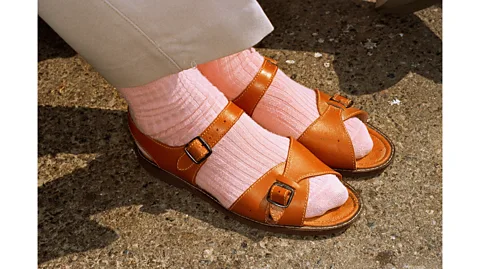 Martin Parr
Martin ParrUnsurprisingly, for someone with such a bold approach, Parr is quick to bat away criticism. "I expect negative response to my work, but as I receive more positive comments, I am not too bothered," he tells the BBC, reasoning that it's "better to be talked about than ignored".
More like this:
Perry, whose own prolonged exploration into British class and culture can be seen in a touring exhibition of his six tapestries, The Vanity of Small Differences, has been a fan of Parr's work since the 1980s. Though he acknowledges that "his best work makes you feel a bit uncomfortable for enjoying looking at it", he tells the BBC that many of the objections to Parr's work are misplaced. "People have accused him of being a snob but those first images I saw were of the upper-middle class looking stiff and ridiculous at Conservative garden parties or queueing for Laura Ashley curtains." Far from targeting one segment of society, Perry argues that Parr "documents our national ludicrousness at all levels".
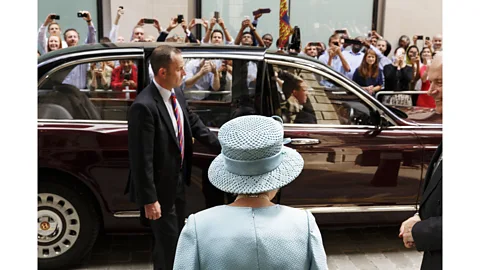 Martin Parr
Martin ParrVisiting Only Human and Perry's explosively colourful portrait back in 2019 was Argentinian-Spanish photographer Brian Walker, a fan of Parr's work whose own lens on Britain would catch Parr's attention when an image from his Afterlife series was shortlisted in the exhibition's competition. Studio photography is one thing, he tells the BBC, but "it's a lot more difficult to grab a moment in life… and that's what Martin Parr does so brilliantly". The photographer, who is best known for his photos of an Elvis impersonation convention in Wales, believes Parr is not a snob but "a truth-teller", and compares him to "a scientist looking under the microscope" or "an anthropologist with the camera". He admits he's "quite envious" of Parr's fearlessness in getting those candid, close-range shots. "If I tried to do that, someone would probably hit me," he says.
Representing Britishness?
While there are many who praise Parr, he has his detractors. Paul Halliday, course leader for the MA in Photography and Urban Cultures at Goldsmiths, University of London, and an urban photographer, is highly critical of some of Parr's work.
 Martin Parr
Martin ParrHalliday, who has a research background in social anthropology, art history and archaeology, is dubious about documentary work such as Parr's that purports to represent Britishness.
"There's a whole bunch of people in the so-called New British Colour School who wheel out some very tired tropes, a kind of branding of Britannia, in a way that a lot of people don't recognise or find deeply anachronistic," he tells the BBC. "Britain is a construct," he argues, despairing, as someone of Scottish-Caribbean heritage, of the repeated offering up of the Highland Games as an emblem of Scottishness, or Carnival as a window on Caribbean culture.
Halliday also objects to what is, in his view, the "smash-and-grab photography" of Parr and others. He is a proponent, he says, of a more "slow-cooking" approach where, rather than parachuting into an alien environment, the photographer is "working very closely with communities, often their own". He cites Markéta Luskačová, Tish Murtha, and Sirkka Liisa-Konttinen as examples of photographers who have documented British life with empathy. Halliday, for his part, has worked extensively with the south east London community where he grew up, documenting the rise of the far right there for Channel 4.
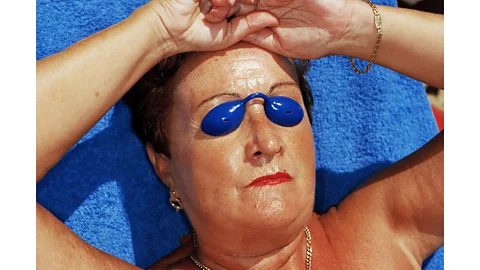 Martin Parr
Martin ParrParr has his own rationale for his approach. "One can learn much more about the country where you live from a comedian than from a conference of sociologists," he told Puss Puss magazine in January. His Benidorm series (1999), for example, is as witty as it is observant, and features die-hard sun-worshippers and snoozers caught off-guard; while the 2019 Death by Selfie series shows, in a light-hearted fashion, how seashore selfie-taking is becoming more popular than swimming.
London-based street photographer Alan Schaller, the co-founder of Street Photography International, interviewed Parr for his podcast in 2020 at the Martin Parr Foundation in Bristol. He rejects the criticism that Parr is looking down on people in a snobby or sneering way. "I just don't see it," he tells the BBC. "If people are interpreting his work like that, maybe it says more about them than him." Far from being exploitative, he sees street photography as "an important discipline" that helps document our history, and as for The Last Resort: "that series has made so many people pick up a camera".
But what Schaller most admires in Parr's work is its distinctiveness. "He's using the same tools as everyone else but he's getting a very different look. When he did his colour work, he came alive," he says. "It's so hyper-real." The subject matter is also highly original. "His eye guides him to things that are very British, but that you wouldn't necessarily think so," he says, referencing Parr's images of baked beans. "People can say what they like about his work, but you can't deny it's iconic."
If we don't always recognise the Britain in Parr's photos, it may be due to its impermanence. British identity is "evolving", says Perry, not least because of the internet, which he describes as "the great blender, mixing all local eccentricities into a bland global paste".
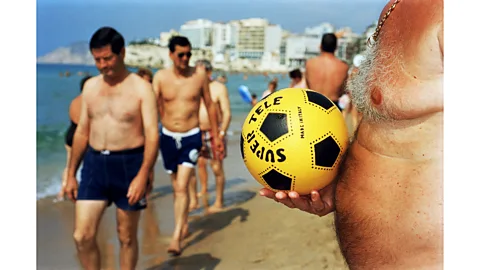 Martin Parr
Martin Parr"Many of the markers of Britishness I grew up with have disappeared," adds Perry, giving as examples: "a more innocent amateur youth subculture"; "disgusting local 'delicacies'"; "the industries that shaped communities"; and "high street shopping". But he sees positives, too. "Humour is still woven into every aspect of daily life," he maintains, and "we are much more relaxed about multiculturalism".
Speaking to Schaller, Parr admits that he has "a love-hate relationship" with Britain, and that photography helps him explore that "like a kind of therapy". Though his pictures are often unflattering and have been criticised as derisive, he says he likes to depict people "real, as they are, as you and I see them". In an earlier interview for The Telegraph, he places the responsibility firmly with the public. "If there is snobbery to be found there, it must be in the viewer," he says. "All I've done is echo that."
Martin Parr, Short and Sweet is at the Milan Museo delle Culture until 30 June. Fashion Faux Parr by Martin Parr with essays by Patrick Grant and Tabitha Simmons is published by Phaidon.
Grayson Perry's The Vanity of Small Differences is on show at The Lightbox in Woking, UK until 2 June.
--
If you liked this story, sign up for The Essential List newsletter – a handpicked selection of features, videos and can't-miss news, delivered to your inbox twice a week.
